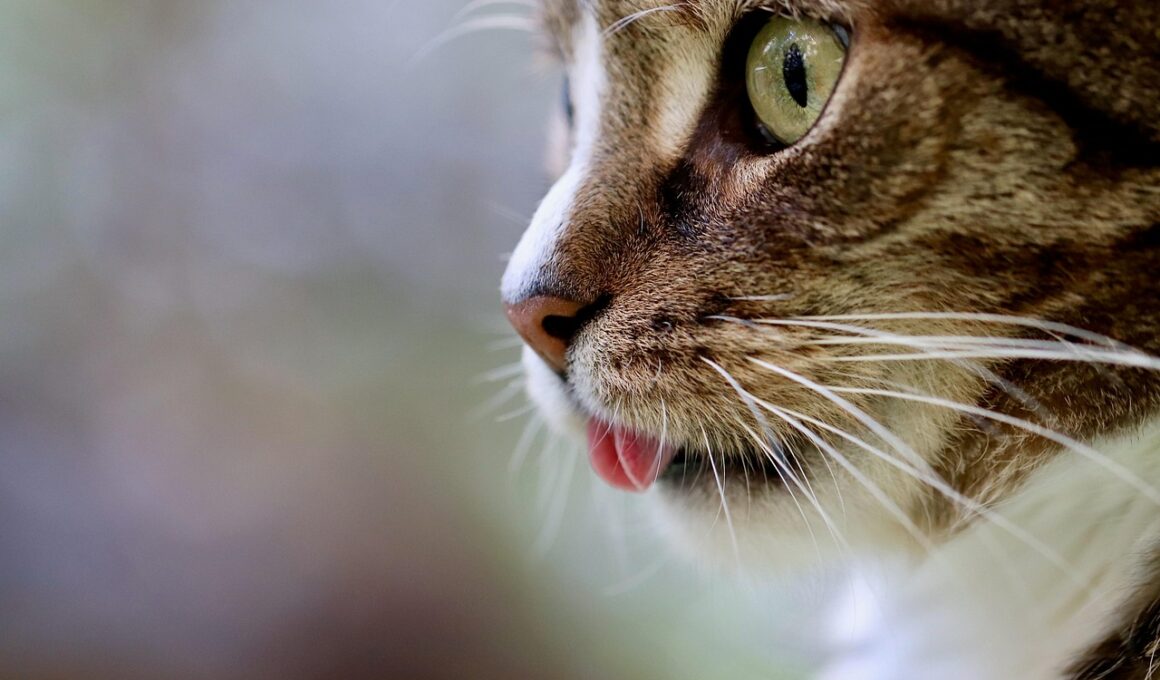Understanding Cat Behavior: Name Recognition Explained
When it comes to cat training, name recognition is a vital aspect that every cat owner should understand. Cats, unlike dogs, respond to their names in unique ways, influenced by their personality and environment. This cognitive behavior signifies that cats can indeed associate sounds with specific actions or attention from their owners. Training your feline companion to recognize its name involves patience, consistency, and positivity. Interestingly, cats are more likely to respond when they perceive the sound of their name as a signal for food or play. Utilizing treats or engaging toys can enhance their understanding and retention. Fostering an environment where a cat feels secure will aid in developing this recognition process. Always avoid negative reinforcement, as it can lead to stress or fear, undermining the training efforts. Positive experiences linked to their name are essential for effective learning. Therefore, ensure that you create a harmonious atmosphere, one where your cat feels valued and understood. Understanding these dynamics can significantly improve interactions while making calls to your feline friend more effective, paving the way for a fulfilling relationship with your cat.
One effective strategy for ensuring name recognition in cats involves repetition through daily interactions. By calling your cat’s name consistently during feeding times or play sessions, your feline begins to associate its name with pleasurable experiences. This structured approach provides a reliable framework for the cat to learn and recognize its name. Incorporating positive reinforcement during these sessions is crucial. When your cat turns its head or moves toward you upon hearing its name, rewarding this behavior with treats or affection will reinforce the association. Moreover, try to avoid using your cat’s name in negative contexts, as this could confuse them or create stress. Establishing a routine where your cat experiences its name in a joyful tone enhances these learning principles. Use engaging activities and varied tones while calling your cat. Not only does this prevent monotony, but it also keeps the cat alert and curious. Recognizing names is a gradual process, often taking weeks; however, with consistent execution, some cats may respond in just a few days. Celebrate small victories during this learning journey for a more fulfilling bonding experience between you and your beloved feline.
The Role of Positive Reinforcement
Positive reinforcement remains one of the most effective methods when training cats to identify their names. Associating their names with rewards, such as treats, is a simple yet powerful technique. Each time your cat responds correctly, offer a small treat or a warm stroke, reinforcing their understanding positively. This method mimics natural learning patterns, which rely on seeking pleasure as motivation. Furthermore, utilizing varied commands or sounds can prevent your cat from becoming disinterested. Cats thrive in environments where their curiosity is engaged, so utilizing toys or stimulating activities during the training sessions can prove helpful. Maintain a calm and soothing demeanor; your emotional state can affect your cat’s receptiveness to training. An agitated owner may inadvertently create negative associations, hindering the learning process. As you observe your cat’s progress, adjust your methods to maintain its interest. For instance, if a specific reward becomes less enticing, consider switching to different treats. Personalized approaches, tailored to your cat’s preferences, can yield better training outcomes, enabling a stronger bond. Through patience and perseverance, you will find effective ways to harness positive reinforcement to enhance your cat’s name recognition successfully.
Understanding cat behavior adds depth to facilitating name recognition. Cats communicate and interact in unique ways. Unlike dogs, who rely on owner cues more heavily, cats often prefer to approach training on their terms. This independent nature requires owners to adapt their methods. By observing your cat’s habits, you can tailor your training strategies to fit its personality. For example, if your cat tends to be aloof, incorporating more enticing treats may improve its response. Creating a stimulating environment can make training sessions more enjoyable, fostering both engagement and recognition. Choose moments when your cat is naturally more active, promoting readiness to learn. Engaging these windows can lead to faster assimilation of name recognition. Recognize that some breeds exhibit stronger tendencies to learn commands than others, affecting their receptiveness. Ensure that your expectations match your cat’s capabilities. Gradually introducing the name during various activities can create a powerful connection between recognition and response. Through repeated practice, patience, and an understanding of individual traits, you will facilitate successful name recognition in your cat, ultimately enhancing the day-to-day bonding experience.
The Importance of Attention and Connection
Name recognition in cats closely ties to attention and emotional connection. Engaging with your cat during training is imperative to nurture this bond. Cats are sensitive to their owners’ emotional states, and responding to their name is often a reflection of their comfort and trust. By providing a warm and affectionate environment, you encourage responsiveness. Starting early in a cat’s life often yields better results; young kittens are particularly adaptable to training. Ensure that training incorporates engaging tasks, as this will hold their attention and encourage learning. Use your cat’s curiosity to your advantage by linking playful activities with name recognition. Frequent interactions enhance their understanding and can spark a genuine interest in responding to their name. While some cats may flourish under structured training methods, others may need a more spontaneous and playful approach. Each cat is unique; therefore, observe their reactions closely to adapt your training. Building this bond fosters a confident feline eager to interact. This strong foundation can lead to deeper understanding and companionship, where name recognition becomes a natural aspect of your shared experience.
Challenges arise during the name recognition process, necessitating flexibility and creativity in training techniques. Some cats may initially resist responding to their names, leading to frustration for owners. It’s essential to recognize that each cat’s behavior varies greatly. For instance, older cats may have established patterns, making name recognition more challenging. Patience and understanding will be your allies in overcoming these hurdles. Employing enticing sounds or varying call techniques can capture your cat’s focus. Switching up the rewards, such as new favorite treats or extended playtime, can re-engage your cat’s interest. Monitor progress daily and adjust commands if the current ones aren’t effective. Remember that a relaxed approach often yields better results, as stress can hinder learning. Recognizing when your cat is disinterested is equally important; seeking alternate forms of engagement becomes critical. Don’t hesitate to take breaks from training sessions if needed. Celebrating small victories encourages your cat’s confidence and reassures them in the process. Gradually, with perseverance, your cat will learn to associate its name with positive experiences, resulting in joyous interactions.
Building a Lasting Relationship Through Training
Ultimately, training your cat to recognize its name serves as a gateway to building a lasting relationship. Each step in this journey enriches a bond that fosters communication and understanding between owner and cat. By ensuring that training remains fun and interactive, you create an atmosphere for both of you to thrive. As your cat learns to respond consistently, mutual respect and companionship deepen. This attentive approach nurtures a responsive cat, one that looks to you for engagement, leading to a fulfilling relationship. Engage in regular sessions, integrating name recognition into daily routines, to reinforce the learning consistently. Incorporate playful moments where your cat associates its name with happiness. Over time, you will find your cat willingly coming to you upon hearing its name, creating delightful interactions. Moreover, this connection can have broader implications for your cat’s overall behavior and trust levels. Following these principles fosters a loyal companion eager to respond and interact. A solid understanding of their name bolsters both training effectiveness and emotional attachment, resulting in profound interactions that define a healthy owner-cat dynamic.
As seen throughout the training of your cat to respond to its name, the process revolves around understanding, patience, and connection. Each cat is unique, taking their own time to learn and adapt to cues. By being mindful of individual personalities and preferences, every owner can make their training methods more effective. Remaining consistent, yet flexible, allows adjustment to suit the cat’s reactions and cravings. This balance ultimately enhances the training experience, producing a fulfilling relationship that encourages vital communication. Capitalizing on rewarding moments and creating links between positive experiences and name recognition paves the way for enduring memories of joy and companionship. Your cat’s name serves as more than just a sound; it signifies your bond and mutual understanding. Through repeated practice, gentle nudges, and unrelenting affection, you can create a fulfilling day-to-day interaction where your cat responds to its name with delight. Cherish these moments; they are the foundation of a loving relationship. The process not only hones communication skills but also enriches both your daily life and your cat’s experience, fostering happiness and connection as they thrive in your companionship.


